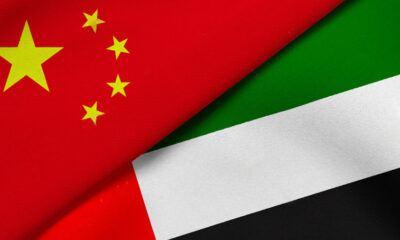Asean
Resuming Peace Talks in Philippines a Positive Step
After seven months in office the administration of Philippines President Benigno Aquino resumed peace talks with the separatist group, the Moro Islamic Liberation Front. The International Crisis Group Thursday released a report on the situation in the southern Mindanao region of the Philippines saying the obstacles to peace are enormous but the resumption of negotiations is promising. The International Crisis Group report released Thursday says the fact that peace negotiations between the government of the Philippines and the separatist group the Moro Islamic Liberation Front or MILF resumed in February, after being stalled for over two years, is a positive development. Bryony Lau, the group’s Southeast Asia analyst, says the election of President Benigno Aquino last year has given the peace talks new life. “Although we have not seen a lot of movement in terms of the negotiation positions of the Moro Islamic Liberation Front, the fact that we have a new government that has a new team that is pretty engaged and optimistic is much more promising than the situation this time a year ago,” Lau said. But the report also details the many obstacles to peace in this Catholic majority country where Islamic separatists have been fighting for independence for 40 years in the southern Mindanao region. The region has already been given a degree of autonomy that was negotiated with a rival insurgency group called the Moro National Liberation Front. The two groups are deeply divided the reports says, and the current local government is seen as dysfunctional. Last year Mindanao Governor Zaldy Ampatuan was arrested for involvement in an attack on a rival political group that killed 57 people. Lau says there are also concerns that MILF is supporting terrorist activities. “Periodically there are suggestions in the Philippines media of MILF members being involved in terrorist attacks, most notably with the bombing in the central business district of Manila in late January,” Lau added. “And immediately after that bombing there were rumors that the type of weapon used and the way it was detonated was reminiscent of tactics used in the MILF heartland.” The report says the MILF wants a greater degree of autonomy and more clearly defined powers such as the ability to form an internal security force. The government has so far been noncommittal in the talks but Lau says it would likely want reassurances on security issues and clearly defined borders for the region that is spread across a number of islands. Talks are scheduled to resume in April.
After seven months in office the administration of Philippines President Benigno Aquino resumed peace talks with the separatist group, the Moro Islamic Liberation Front. The International Crisis Group Thursday released a report on the situation in the southern Mindanao region of the Philippines saying the obstacles to peace are enormous but the resumption of negotiations is promising.
The International Crisis Group report released Thursday says the fact that peace negotiations between the government of the Philippines and the separatist group the Moro Islamic Liberation Front or MILF resumed in February, after being stalled for over two years, is a positive development. Bryony Lau, the group’s Southeast Asia analyst, says the election of President Benigno Aquino last year has given the peace talks new life.
“Although we have not seen a lot of movement in terms of the negotiation positions of the Moro Islamic Liberation Front, the fact that we have a new government that has a new team that is pretty engaged and optimistic is much more promising than the situation this time a year ago,” Lau said.
But the report also details the many obstacles to peace in this Catholic majority country where Islamic separatists have been fighting for independence for 40 years in the southern Mindanao region. The region has already been given a degree of autonomy that was negotiated with a rival insurgency group called the Moro National Liberation Front. The two groups are deeply divided the reports says, and the current local government is seen as dysfunctional. Last year Mindanao Governor Zaldy Ampatuan was arrested for involvement in an attack on a rival political group that killed 57 people. Lau says there are also concerns that MILF is supporting terrorist activities.
“Periodically there are suggestions in the Philippines media of MILF members being involved in terrorist attacks, most notably with the bombing in the central business district of Manila in late January,” Lau added. “And immediately after that bombing there were rumors that the type of weapon used and the way it was detonated was reminiscent of tactics used in the MILF heartland.”
The report says the MILF wants a greater degree of autonomy and more clearly defined powers such as the ability to form an internal security force. The government has so far been noncommittal in the talks but Lau says it would likely want reassurances on security issues and clearly defined borders for the region that is spread across a number of islands.
Talks are scheduled to resume in April.
Continued here:
Resuming Peace Talks in Philippines a Positive Step
Asean
ASEAN weathering the COVID-19 typhoon

Author: Sandra Seno-Alday, Sydney University
The roughly 20 typhoons that hit Southeast Asia each year pale in comparison to the impact on the region of COVID-19 — a storm of a very different sort striking not just Southeast Asia but the world.
Just how badly is the COVID-19 typhoon thrashing the region? And what might the post-crisis recovery and reconstruction look like? To answer these questions, it is necessary to investigate the strengths and vulnerabilities of Southeast Asia’s pre-COVID-19 economic infrastructure.
Understanding the structure of the region’s economic house requires going back to 1967, when Southeast Asian countries decided to pledge friendship to one another under the ASEAN framework. While other integrated regions such as NAFTA and the European Union have aggressively broken down trade barriers and significantly boosted intra-regional trade, ASEAN regional economic integration has chugged along slower.
Southeast Asian countries have not viewed trade between each other as a top priority. The trade agreements in the region have been forged around suggestions for ASEAN countries to lower tariffs on intra-regional trade to within a certain range and across limited industries. This has lowered but not eliminated barriers to intra-regional trade. Consequently, a relatively significant share of Southeast Asian trade is with countries outside the region. This active extra-regional engagement has resulted in ASEAN countries’ successful integration into global value chain networks.
A historically outward-facing region, in 2010 around 75 per cent of Southeast Asian commodity imports and exports came from countries outside of ASEAN. This share of extra-regional trade nudged closer to 80 per cent in 2018. This indicates that ASEAN’s global value chain network embeddedness has deepened over time.
Around 40 per cent of ASEAN’s extra-regional trade is with the rest of Asia. From 2010 to 2018 Southeast Asian countries forged major trade relationships with four Asian countries: China, Japan, South Korea and India. Outside Asia, the United States is the region’s major trading partner. ASEAN’s trade focus on Asia’s largest markets is not surprising. Countries tend to establish trade relationships with large, geographically close, and culturally similar markets.
Fostering deep relationships with a few large markets, however, is a double-edged sword. While it has allowed ASEAN to benefit from integration in global value chains, it has also resulted in increased vulnerability to the shocks affecting its network connections.
ASEAN’s participation in global value chains has allowed it to transition from a net regional importer in 1990 to a net regional exporter in 2018. But the region’s deep embeddedness in a small and tightly-coupled network cluster of extra-regional global value chain partners has exposed it to disruption to any and all of its external partners. By contrast, ASEAN’s intra-regional trade network structure is much more loosely-coupled: a consequence of persistent intra-regional trade barriers and thus lower intra-regional trade intensity.
In the pre-COVID-19 period, ASEAN built for itself an economic house held up by just five extra-regional markets, while doing less to expand and diversify its intra-regional trade network. The data shows that ASEAN trade became increasingly concentrated in these few external markets between 2010 and 2018.
This dependence on a handful of markets does not bode well for risk and crisis management. All of the region’s major trading partners have been significantly affected by COVID-19 and this in turn is blowing the ASEAN economic house down.
What are the ways forward? The immediate task at hand is to get a better picture of the region’s position in global value chain networks and to get on top of managing its network risk exposure. Already there are red flags around the region’s food security arising from its position in food value chains. It is critical to look for ways to introduce flexibility into existing supply chains for greater agility in responding to crises.
It is also an opportune time for ASEAN to harness the technology transfer gains of global value chain participation and invest in innovation-driven diversification of products and markets. The region’s embeddedness in global value chain networks certainly places it in a strong position to readily access large export markets not just in Asia but also Europe and the Americas.
Over the longer term, ASEAN is faced with the question of whether it should seriously look…
Markets
Tiger Trade Launches SGX Trading, Meeting Demand from Asian Investors
Access to the Singapore Exchange (SGX) adds to Tiger Brokers’ current menu of stock exchanges, such as the New York Stock Exchange (NYSE) and the Nasdaq Stock Market (NASDAQ), the world’s two largest stock exchanges, as well as the Hong Kong Stock Exchange (HKEX).

SINGAPORE (ACN Newswire) – Tiger Trade, a one-stop mobile and online trading application by Tiger Brokers, has launched access to the Singapore Exchange (SGX).
(more…)Asean
Can Asia maintain growth with an ever ageing population ?
To boost productivity in the future, Asian governments will have to implement well-targeted structural reforms today.

Asia has been the world champion of economic growth for decades, and this year will be no exception. According to the latest International Monetary Fund Regional Economic Outlook(REO), the Asia-Pacific region’s GDP is projected to increase by 5.5% in 2017 and 5.4% in 2018. (more…)












